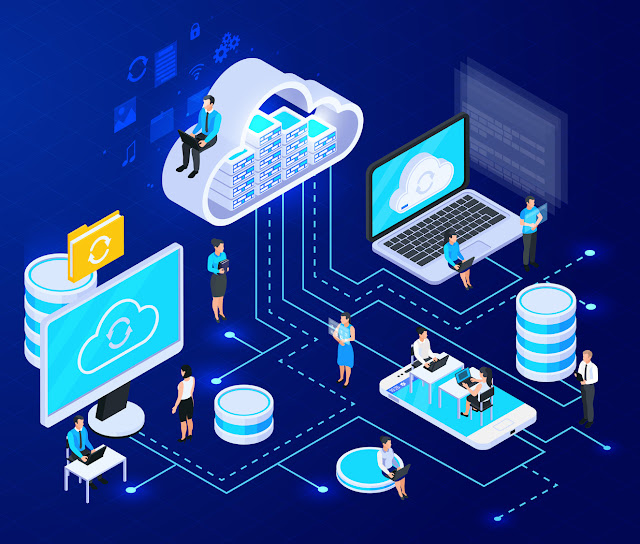System Migration Process
In today's ever-evolving technological landscape, staying competitive and secure demands a proactive approach to system migration. Whether you're seeking improved performance, enhanced security, or the benefits of new features, navigating a system migration successfully requires a well-structured and methodical approach. This comprehensive guide outlines the key stages of a systematic system migration process. From initial assessment and planning to continuous improvement, each step is designed to ensure a smooth transition, minimise disruptions, and harness the full potential of modern technologies. So, let's embark on this journey, where careful assessment, strategic planning, and meticulous execution pave the way for a seamless system migration that aligns with your organisation's evolving needs and goals.
Why it’s essential
A systematic approach empowers teams to make informed decisions, allocate resources efficiently, and align the migration with overarching business objectives. Furthermore, it instils confidence in stakeholders, from end-users to leadership, that the transition will be smooth, reliable, and ultimately lead to a system that's not only updated, but also optimised for future growth and innovation.
Step 1: Assessment and Planning
- Understand the current state of the application - Document the existing architecture, technologies, dependencies, and any known issues.
- Identify the reasons for upgrading - Clearly define the goals and benefits you expect to achieve from the upgrade, such as improved performance, security, scalability, or new features.
- Define the scope - Determine which parts of the application will be upgraded and whether any components will be replaced or rewritten.
- Create a detailed project plan - Break down the upgrade process into phases or tasks, assign responsibilities, and set realistic timelines.
Step 2: Requirements Gathering
- Evaluate technology options - Research and choose modern technologies, frameworks, libraries, and tools that align with your upgrade goals and will support the long-term needs of the application.
- Consider future scalability and maintenance - Select technologies that are actively maintained, have a strong community, and can accommodate future changes.
Step 3: Technology and Framework Selection
- Evaluate technology options - Research and choose modern technologies, frameworks, libraries, and tools that align with your upgrade goals and will support the long-term needs of the application.
- Consider future scalability and maintenance - Select technologies that are actively maintained, have a strong community, and can accommodate future changes.
Step 4: Architecture and Design
- Design the upgraded architecture - Create a detailed architectural design that incorporates the chosen technologies and addresses any architectural challenges from the legacy system.
- Plan for data migration - Develop a strategy for migrating data from the old system to the new one while ensuring data integrity and minimal disruption.
Step 5: Development and Testing
- Incremental approach - Break down the upgrade into smaller, manageable increments and upgrade one component/module at a time. This minimises risk and allows for thorough testing at each step.
- Develop and test - Rewrite, refactor, or re-implement components according to the new architecture. Rigorously test each component to identify and fix bugs, ensure compatibility, and validate performance.
- Automated testing - Implement automated testing (unit tests, integration tests, and end-to-end tests) to ensure code quality and prevent regressions.
- Plan and execute data migration - Migrate data from the legacy system to the upgraded one, ensuring data consistency, accuracy, and completeness.
- Data validation - Validate the migrated data to ensure it's correctly transferred and transformed in the new system.
Step 7: User Acceptance Testing (UAT)
- Involve stakeholders - Collaborate with users and stakeholders to conduct thorough testing of the upgraded application in a controlled environment.
- Address feedback - Address any issues, bugs, or usability concerns raised during UAT.
Step 8: Training and Documentation
- Provide training - Ensure that users, administrators, and support teams are trained on the new features and changes introduced by the upgrade.
- Update documentation - Revise user manuals, technical documentation, and support resources to reflect the changes in the upgraded application.
Step 9: Deployment and Go-Live
- Plan deployment - Prepare a deployment plan that outlines the steps for deploying the upgraded application to production.
- Rollout strategy - Consider a phased rollout or a gradual transition to minimise disruption and ensure a smooth go-live.
Step 10: Monitoring and Support
- Monitor performance - Continuously monitor the upgraded application for performance bottlenecks, errors, and other issues.
- Provide ongoing support - Offer technical support to address any post-go-live issues, and be prepared to make necessary adjustments based on real-world usage.
Step 11: Continuous Improvement
- Gather feedback - Solicit feedback from users and stakeholders after the upgrade to identify areas for improvement and address any remaining concerns.
- Iterative approach - Plan for future updates and enhancements based on user feedback, emerging technologies, and changing business needs.Remember that communication, collaboration, and thorough testing are key throughout the entire upgrade process. Make sure to involve relevant stakeholders, maintain clear documentation, and have contingency plans in place to mitigate potential risks and challenges that may arise during the upgrade.
Conclusion
In the realm of technology, adaptability and evolution are key to sustained success. The system migration process outlined here underscores the importance of a structured and strategic approach in navigating the ever-changing IT landscape. By embracing this methodical journey, organizations not only safeguard their operations but also unlock opportunities for growth and innovation. From the meticulous assessment and planning phase to the continuous improvement cycle, every step is designed to ensure a seamless transition that aligns with business goals. In today's digital age, where the only constant is change, a well-planned system migration isn't just an option; it's a necessity. So, as you embark on your migration journey, remember that every careful step taken will lead to a future where your systems are not only updated but also optimized for the challenges and opportunities that lie ahead.



Comments
Post a Comment